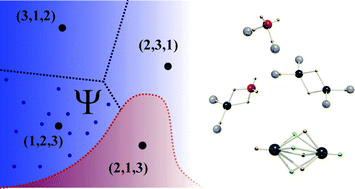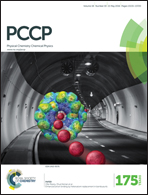Chemical bonding motifs from a tiling of the many-electron wavefunction
Abstract
A method is presented to partition the 3N-dimensional space of a many-electron wavefunction into hyper-regions related by permutation symmetry. These hyper-regions represent unit cells, or “tiles” of the wavefunction from which the wavefunction may be regenerated in its entirety upon application of the set of permutations of like-spin electrons. The method, wherein a Voronoi diagram is constructed from the (even permutations of the) average position of a swarm of Monte Carlo walkers sampling |Ψ|2, determines a self-consistent partitioning of the wavefunction. When one of the identical 3N-dimensional Voronoi sites is projected onto the coordinates of each electron, chemical motifs naturally appear, such as core electrons, lone-pairs, single-bonds and banana-bonds. The structures determined for N2, O2, F2, and other molecules correspond to the double-quartet theory of Linnett. When the procedure is applied to C2, we arrive at an interpretation of its bonding in terms of a near triple bond with singlet-coupled outer electrons.


 Please wait while we load your content...
Please wait while we load your content...